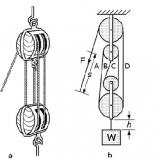CAPACITIVE PROXIMITY SENSOR – 21026
A capacitive proximity sensor takes advantage of the mutual capacitance that occurs between or among objects near each other.
A capacitive proximity sensor uses a radio-frequency (RF) oscillator, a frequency detector, and a metal plate connected into the oscillator circuit, as shown in the diagram. The oscillator is designed so a change in the capacitance of the plate, with respect to the environment, causes the frequency to change. This change is sensed by the frequency detector, which sends a signal to the apparatus that controls the robot. In this way, if the system is properly designed, a robot can avoid bumping into things. In some detectors, the induced capacitance causes the oscillation to stop altogether.
Objects that conduct electricity to some extent, such as house wiring, people, cars, or refrigerators, are sensed more easily by capacitive transducers than are things that do not conduct, such as wooden chairs and doors. Therefore, other kinds of proximity sensors are necessary for a robot to navigate well in a complex environment, such as a household or office.





